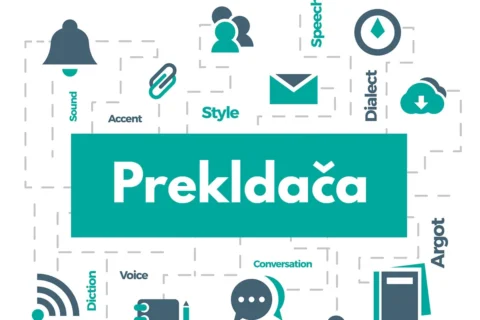Introduction To Arousing Suspicion NYT
In an age where information is abundant and often overwhelming, the New York Times (NYT) has taken on the critical role of uncovering the unusual and the suspicious. The title “Arousing Suspicion NYT” encapsulates the essence of their investigative efforts, where data analysis meets journalistic integrity to reveal hidden truths. This blog explores how the NYT employs analytical techniques to investigate behaviors that raise eyebrows and the implications of these findings for society.
The Art of Data Analysis in Journalism
Data analysis has become a cornerstone of modern journalism, allowing outlets like the NYT to identify suspicious patterns and behaviors that might otherwise go unnoticed. By leveraging vast amounts of data, journalists can spot anomalies that trigger alarms. For example, social media interactions, financial transactions, and other behavioral data can be scrutinized to uncover connections between seemingly unrelated individuals or events. This proactive approach to journalism not only enhances the quality of reporting. It also enables authorities to focus their resources where they are needed most. The NYT’s commitment to data-driven investigations exemplifies how technology can be harnessed to interpret complex datasets quickly and effectively, shedding light on potential risks before they escalate.
Notable Investigations That Aroused Suspicion
The NYT has uncovered a variety of unusual behaviors that have raised significant concerns. Some compelling examples include:
- Excessive Cash Transactions: Investigations revealed individuals making large cash withdrawals within short time frames, raising red flags about potential money laundering activities.
- Online Misinformation: The NYT highlighted patterns in social media activity where clusters of accounts were found sharing misleading information. Often linked to specific events or crises, suggesting organized efforts to manipulate public perception.
- Insider Trading: Sudden spikes in stock trading volumes prior to major corporate announcements indicated potential insider trading, prompting further scrutiny into unethical practices.
These investigations not only reveal individual actions but also raise questions about broader societal implications. Including the impact of suspicious behavior on public trust and safety.
The Societal Impact of Arousing Suspicion
Suspicious behavior can create a ripple effect that extends beyond the individual involved. It often feeds into societal fears and anxieties, leading to heightened security measures and increased scrutiny in public spaces. Individuals may find themselves under suspicion based on their actions or associations, highlighting the delicate balance between vigilance and the preservation of civil liberties. The NYT’s exploration of these issues invites critical discussions about privacy and ethics in the age of data. As law enforcement agencies and the public navigate the complexities of suspicious behavior. It is essential to maintain a focus on individual rights while addressing potential threats.
Conclusion: The Importance of Vigilance and Responsibility
The investigation of suspicious patterns and behaviors has become increasingly vital in today’s society. The New York Times’ efforts in “Arousing Suspicion” highlight the profound impact that data analysis can have on uncovering potential risks. By shining a light on unusual behavior, the NYT not only informs the public but also raises critical questions about how we interpret and respond to suspicion. As we move forward, it is crucial to foster a culture of responsibility when identifying suspicious behavior. Engaging in thoughtful dialogue around these issues encourages a balanced approach that respects individual rights while prioritizing public safety. The interplay between suspicion and security underscores the necessity for vigilance among both authorities and citizens. Reminding us that the quest for safety should never come at the expense of our shared humanity.
Also Read: Get_Ready_Bell:Client_Pulse: Unlocking Customer Engagement
FAQs
1. What does “arousing suspicion” mean in journalism?
“Arousing suspicion” in journalism refers to the practice of presenting information in a way that prompts readers to question the validity or integrity of the subject matter. This technique encourages critical thinking and deeper analysis of the information presented.
2. How does the New York Times utilize the concept of arousing suspicion?
The New York Times employs the concept of arousing suspicion through investigative reporting that highlights unusual patterns or behaviors. By using data analysis and strategic language, the NYT encourages readers to consider the implications of the information. And to think critically about the stories being reported.
3. What are some examples of suspicious behaviors reported by the NYT?
Examples of suspicious behaviors reported by the NYT include excessive cash transactions, spikes in stock trading volumes. Before major announcements, and patterns of online activity linked to misinformation or extremist content.
4. Why is arousing suspicion an effective technique in journalism?
Arousing suspicion is effective because it engages readers, prompting them to question and analyze the information rather than passively consuming it. This critical engagement fosters a more informed public and encourages deeper discussions about important issues.
5. What are the potential downsides of arousing suspicion in reporting?
While arousing suspicion can promote critical thinking, it can also lead to mistrust in media if readers feel that stories are being manipulated or sensationalized. Excessive suspicion can create a cynical audience that is skeptical of all news, which can undermine public discourse.
6. How does the NYT balance arousing suspicion with journalistic integrity?
The NYT balances arousing suspicion with journalistic integrity by presenting multiple perspectives, using credible sources, and ensuring that claims are substantiated. This approach allows readers to weigh evidence critically while maintaining trust in the reporting.












